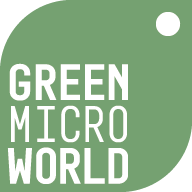balanced pond ecosystem
Ponds are fascinating microcosms of nature, teeming with life and exhibiting a delicate balance that sustains a diverse array of organisms. Within these serene aquatic habitats, a complex web of interactions occurs, where plants, animals, and microorganisms coexist in a finely tuned system. These balanced pond ecosystems provide vital ecological services, ensuring the health and vitality of the surrounding environment.
A balanced pond ecosystem is a harmonious interplay between its living and non-living components. The key to its equilibrium lies in the intricate relationships between producers, consumers, and decomposers, each playing a crucial role in maintaining the ecosystem’s stability. At the heart of this ecosystem, aquatic plants, such as water lilies, cattails, and submerged vegetation, serve as the primary producers, harnessing the energy of the sun through photosynthesis.
These plants not only provide oxygen and food for other organisms but also create shelter and breeding grounds for various aquatic creatures. Fish, amphibians, reptiles, and insects find refuge in the submerged foliage, while birds and mammals visit the pond’s edge to quench their thirst and hunt for food. The interdependence between the different trophic levels ensures a continuous flow of energy and nutrients throughout the pond ecosystem.
Microorganisms, including bacteria, algae, and fungi, play a vital role as decomposers, breaking down organic matter and recycling nutrients. They contribute to the pond’s nutrient cycle by converting detritus and waste into essential elements that nourish the plants, completing a seamless loop of energy flow and material cycling. This natural balance allows the pond to sustain itself, minimizing the impact of external disturbances and maintaining a thriving ecosystem.
A balanced pond ecosystem is not only a spectacle of nature but also a valuable tool for water purification and conservation. The plants and microorganisms act as natural filters, absorbing excess nutrients and pollutants, improving water quality, and preventing eutrophication. Additionally, these ecosystems serve as critical habitats for many species, fostering biodiversity and preserving the genetic diversity of aquatic life.
However, the delicate equilibrium of a pond ecosystem can be easily disrupted by human activities, such as pollution, habitat destruction, or the introduction of non-native species. To ensure the long-term sustainability of these ecosystems, it is crucial to recognize their intrinsic value and take proactive measures to protect and restore them.
In conclusion, balanced pond ecosystems are captivating microcosms that exhibit the intricate connections between organisms and their environment. They represent a dynamic tapestry of life, where each component plays a crucial role in maintaining the delicate balance. By understanding and appreciating the complexity of these ecosystems, we can foster their preservation and contribute to the conservation of our planet’s natural wonders.
REQUIRE MORE DETAILS?
BENEFITS
The microbes help break down organic matter and excess nutrients in the pond, reducing algae growth and improving water clarity.
The microbes can help break down organic matter, which in turn can increase oxygen levels in the water. This can benefit fish and other aquatic life in the pond.
The microbes can help break down organic matter and convert it into nutrients that can be used by plants in and around the pond, promoting healthy growth.
The microbes can help break down organic matter that can produce unpleasant odors, reducing the smell of the pond.


